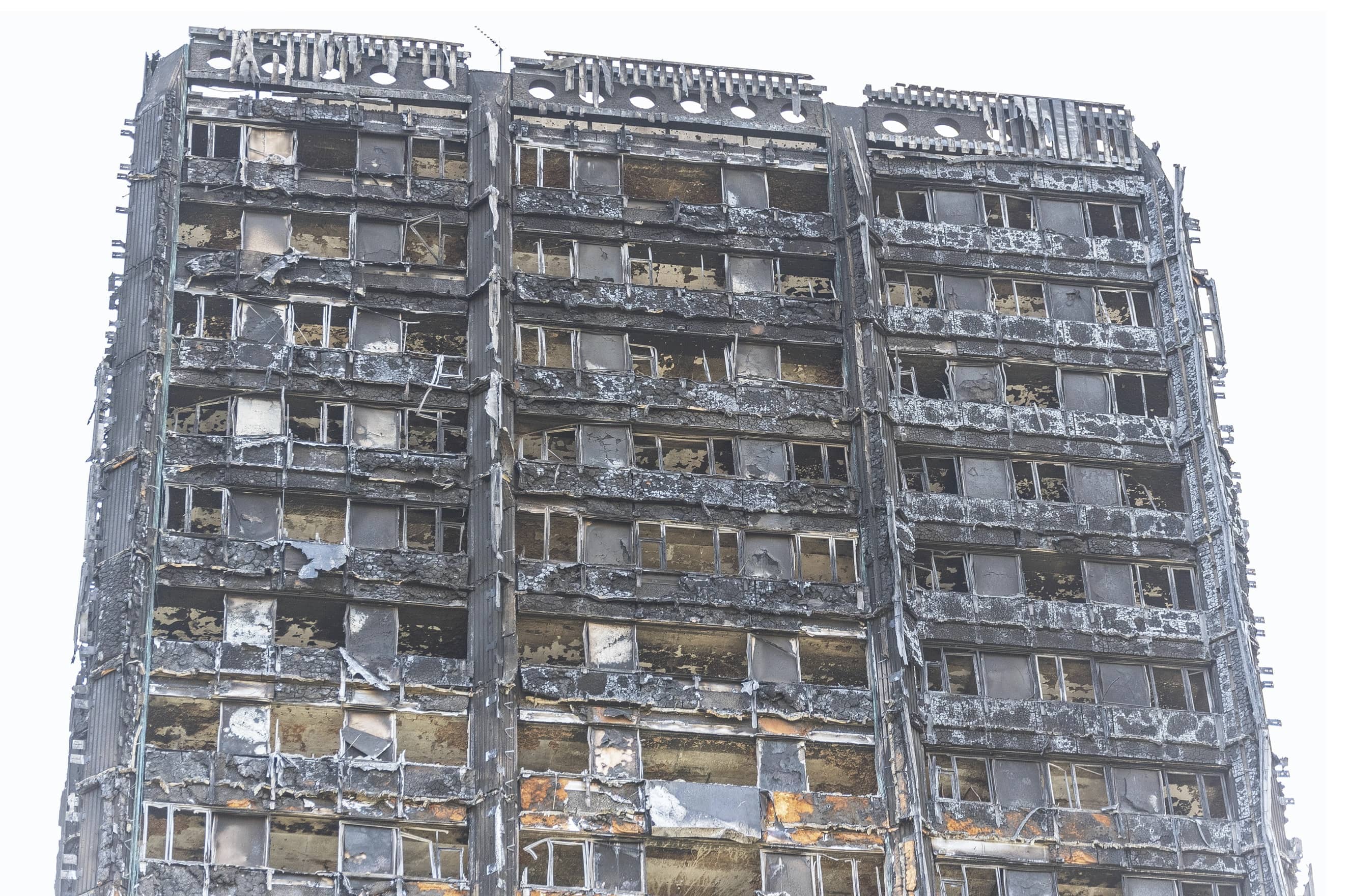
www.buildingsandcities.org/insights/commentaries/building-failures-flat-developments.html
Addressing Building Failures in Flat Developments

Why developers and professionals need to take more responsibility.
The discovery, after the Grenfell Tower fire disaster in 2017, that hundreds of blocks of flats in the UK had been clad in flammable cladding raises serious questions about the competency of the developers of flats and the legal and regulatory environment in which they operate. Bernard Rimmer (formerly a director of engineering companies and also University of Reading) explains the conditions that allowed developers to create unsafe buildings, and proposals are made to require developers to design and construct to higher standards and to take full responsibility for the safety, durability and performance of the buildings they produce.
Building failures
Prior to the cladding disaster, major faults in building construction have largely been due to the failure of workmanship or materials when used in certain conditions (e.g. concrete made with high alumina cement failed in the hot humid conditions of a laundry, and porous RAAC precast units failed when exposed to persistent roof leaks). The faulty engineering design of new methods of construction (e.g. the inadequate structural connection between the precast units on Ronan Point in London which led to its partial collapse in 1968) also contributed. In the case of the rain-screen cladding (RSC) disaster, there was no lack of knowledge of the physical properties of the materials used in the system.
Design of the RSC over-cladding system, developed in the 60s to improve the performance and appearance of old buildings, was carried out by proprietary systems manufacturers for many years before they stopped installing their systems around 1990. Architects in the UK then assumed responsibility for the design of the system and the Centre for Windows and Cladding Technology (CWCT) at the University of Bath (in collaboration with the Royal Institute of British Architects), developed a body of knowledge for architects to use in this new task. The procurement of the many parts, and the DIY-type installation, was taken over by sub-contractors who had no design responsibility. The question of who had responsibility for the cladding became increasingly blurred: manufacturer, architect and / or subcontractor.
The RSC system was later adapted to clad new-build blocks of flats. It did not help that the Building Regulations gave confusing guidance on the use of aluminium composite material (ACM) panels in the system, and architects incorporated them, in addition to foam plastic insulation, into their designs. This situation would be unlikely to occur with a proprietary system and illustrates the dangers of splitting design and construction responsibility for engineering systems, particularly when the lead consultants are not engineers.
To understand how this happened it is important to examine how our modern building industry operates.
The workings of the UK building industry
During the 60s and 70s the UK industry construction sector saw the proliferation of businesses split between professional services (design, costing, project/construction management) and construction operations (main contracting, sub-contracting, design-and-install specialist sub-contracting). The great builders of the past, companies e.g. John Laing and George Wimpey, are long gone from providing clients with a complete package deal for which they took total responsibility/liability. Today's clients of the industry have no option but to take the lead role themselves in the process of designing and constructing buildings. They have the task of recruiting a group of consultants and other businesses to work on their projects and are faced with an array of options on how to handle the split between design and construction resources. This demands leadership and people skills of a high order, as well as knowledge of how the industry works, to get the best results. Top clients produce world-class buildings, but disasters are still possible, particularly if clients use procurement methods where there is a split responsibility for the design and construction of critical sections of the buildings.
Developers are clients that make all the important choices including how much to spend, the procurement method, contracts, style, functionally and maintainability of the buildings and, in making all the big decisions, they are de facto chief designers of the projects. They have total control of the outcome and can hold their supply-chain responsible for any mistakes they make. When developers sell the flats, their customers should have the benefit of protection from paying for the remediation of faults, but in flat developments, the sales contract terms and lease terms together ensure that little protection exists.
Builders as clients
When house builders began developing flats, they became involved with a totally different type of product. Traditional housing is all about managing the quality of craft trades, flats are all about managing high tech design and construction. Much more technically equipped leadership of the projects is required, focussing not only on costs and margins, but on designing buildings that are safe and durable in the long-term. In the event, the builder developers, with property surveyors in the lead, designed down to the lowest cost possible for the facades, with no engineering oversight, split design and construction responsibility, little site supervision, many missing parts and with critical hidden parts in the system which could not be maintained without all the panels being removed. And in blaming the Building Regulations for the combustibility of the cladding and passing on the costs of remediation to their customers, developers demonstrated that they did not feel in any way responsible for their design decisions and ultimately for the products they created.
On the detail of how combustible cladding was chosen, we may never know the whole story, but it is likely that the surveyors who now lead these businesses (it is hard to find any directors from the building industry on their main boards) and who have the incentive to earn huge amounts of money, must have put pressure on the architects to use RSC with ACM panels. False assurances were given by the panel manufacturers that ACM was suitable for use in RSC, but it should have been obvious that a system vulnerable to fire transmission through its ventilated cavity should not contain flammable materials. It is likely that one of the big builders adopted the use of RSC with ACM panels, costing about half as much as proprietary engineered systems, and virtually all the other developers followed. The tragedy is that not one of the many architects involved in the hundreds of buildings was able to stop this happening.
It is my view that builders were not competent developers of flats and did not produce sound buildings that will stand the test of time. And worse, their customers were abandoned to pick up the costs of their incompetence. In the seven years since the Grenfell fire, builders (apart from the late Tony Pidgley of Berkeley Homes in his "I've let you down" admission) have not expressed any regrets for the part they played in the cladding disaster and have reinforced the impression that they have not understood that the main issue for flat development is design quality, not building quality. The action taken to date by government has been mainly to address fire safety issues, and there will be close to zero chance of flammable cladding ever being used again. However, the issues of liability of the developers for the buildings they produce and the design quality of buildings have not been addressed. Therefore, I believe radical measures are necessary to establish future consumer protection for flat buyers and to protect the quality of the built environment in our cities. My proposal for this is outlined below.
Measures needed to control residential developers
Three measures are needed to the control of the development of flats of all heights:
- Developers must work to a set of national design standards for flats.
- Developers must be made wholly liable for the buildings they produce, irrespective of any guidance in the Building Regulations or terms of the tenure.
- Facades must be designated as structural systems requiring engineering oversight.
Design standards
A national set of standards for the design of facades needs to be produced, and the adoption of these standards must then be a condition of obtaining planning consent. A committee charged with producing these standards would include members representing buyers, sellers, planners and building industry experts. The design standards would include the longevity and maintenance cost expectations of the facades.
Liability
Developers need to be held liable for rectifying problems with their design and construction by:
- Legislation to be enacted that will establish the principle of the liability of developers for the buildings they produce, irrespective of any Building Regulation approval. This legislation would also remove the 'caveat emptor' (let the buyer beware) principle for the sale of new buildings and adopting the 'caveat venditor' (let the seller beware) principle for all new-build construction.
- A National Sales Contract to be drafted, and then approved by government, that includes the obligation of developers to fix defects in both the flats and common parts, including latent defects, within specified periods. Developers must be signatories to this contract as a condition of planning consent.
- As a condition of planning consent developers must commit to providing a parent company guarantee, if the parent company is not the development company. The guarantee must be based on a draft approved by government to ensure the buyer / tenant is protected.
Facades
Adoption of one of the following design and construction arrangements for the facades would become a condition of planning consent:
- Proprietary engineered systems designed and installed by specialists.
- Off-site manufactured panel systems designed and installed by specialists.
- THand-built brick and stone facades designed by consultants, supervised by a resident engineer.
Recourse for leaseholders / common-holders
Buyers who suffer damage will be able sue developers collectively for non-compliance to the conditions in the planning stage.
Building regulations and building control
It is my view that the Building Regulations have not kept up with the changing practices in the industry, particularly with modern design and construction, and that the expertise in our consulting resources far outweighs that in the regulatory sector.
I would propose that projects that employ chartered architectural and engineering consultants will not be required to submit their plans to building control for approval. The consultants will only have to sign a joint declaration that their designs comply with the Building Regulations. This would reinforce the fact that developers, as producers, must be responsible for design. And it will encourage the sector to stop using the building industry just as a tool to make money and to start investing in innovation in their supply-chains to gain competitive advantage.
Latest Peer-Reviewed Journal Content
Living labs: epistemic modelling, temporariness and land value
J Clossick, T Khonsari & U Steven
Co-creating interventions to prevent mosquito-borne disease transmission in hospitals
O Sloan Wood, E Lupenza, D M Agnello, J B Knudsen, M Msellem, K L Schiøler & F Saleh
Circularity at the neighbourhood scale: co-creative living lab lessons
J Honsa, A Versele, T Van de Kerckhove & C Piccardo
Positive energy districts and energy communities: how living labs create value
E Malakhatka, O Shafqat, A Sandoff & L Thuvander
Built environment governance and professionalism: the end of laissez-faire (again)
S Foxell
Co-creating justice in housing energy transitions through energy living labs
D Ricci, C Leiwakabessy, S van Wieringen, P de Koning & T Konstantinou
HVAC characterisation of existing Canadian buildings for decarbonisation retrofit identification
J Adebisi & J J McArthur
Simulation and the building performance gap [editorial]
M Donn
Developing criteria for effective building-sector commitments in nationally determined contributions
P Graham, K McFarlane & M Taheri
Reimagining circularity: actions for optimising the use of existing buildings
R Lundgren, R Kyrö, S Toivonen & L Tähtinen
Effective interdisciplinary stakeholder engagement in net zero building design
S Vakeva-Baird, F Tahmasebi, JJ Williams & D Mumovic
Metrics for building component disassembly potential: a practical framework
H Järvelä, A Lehto, T Pirilä & M Kuittinen
The unfitness of dwellings: why spatial and conceptual boundaries matter
E Nisonen, D Milián Bernal & S Pelsmakers
Environmental variables and air quality: implications for planning and public health
H Itzhak-Ben-Shalom, T Saroglou, V Multanen, A Vanunu, A Karnieli, D Katoshevski, N Davidovitch & I A Meir
Exploring diverse drivers behind hybrid heating solutions
S Kilpeläinen, S Pelsmakers, R Castaño-Rosa & M-S Miettinen
Urban rooms and the expanded ecology of urban living labs
E Akbil & C Butterworth
Living with extreme heat: perceptions and experiences
L King & C Demski
A systemic decision-making model for energy retrofits
C Schünemann, M Dshemuchadse & S Scherbaum
Modelling site-specific outdoor temperature for buildings in urban environments
K Cebrat, J Narożny, M Baborska-Narożny & M Smektała
Understanding shading through home-use experience, measurement and modelling
M Baborska-Narożny, K Bandurski, & M Grudzińska
Building performance simulation for sensemaking in architectural pedagogy
M Bohm
Beyond the building: governance challenges in social housing retrofit
H Charles
Heat stress in social housing districts: tree cover–built form interaction
C Lopez-Ordoñez, E Garcia-Nevado, H Coch & M Morganti
An observational analysis of shade-related pedestrian activity
M Levenson, D Pearlmutter & O Aleksandrowicz
Learning to sail a building: a people-first approach to retrofit
B Bordass, R Pender, K Steele & A Graham
Market transformations: gas conversion as a blueprint for net zero retrofit
A Gillich
Resistance against zero-emission neighbourhood infrastructuring: key lessons from Norway
T Berker & R Woods
Megatrends and weak signals shaping future real estate
S Toivonen
A strategic niche management framework to scale deep energy retrofits
T H King & M Jemtrud
Generative AI: reconfiguring supervision and doctoral research
P Boyd & D Harding
Exploring interactions between shading and view using visual difference prediction
S Wasilewski & M Andersen
How urban green infrastructure contributes to carbon neutrality [briefing note]
R Hautamäki, L Kulmala, M Ariluoma & L Järvi
Implementing and operating net zero buildings in South Africa
R Terblanche, C May & J Steward
Quantifying inter-dwelling air exchanges during fan pressurisation tests
D Glew, F Thomas, D Miles-Shenton & J Parker
Western Asian and Northern African residential building stocks: archetype analysis
S Akin, A Eghbali, C Nwagwu & E Hertwich



Latest Commentaries
Building-Related Research: New Context, New Challenges
Raymond J. Cole (University of British Columbia) reflects on the key challenges raised in the 34 commissioned essays for Buildings & Cities 5th anniversary. Not only are key research issues identified, but the consequences of changing contexts for conducting research and tailoring its influence on society are highlighted as key areas of action.
Lessons from Disaster Recovery: Build Better Before
Mary C. Comerio (University of California, Berkeley) explains why disaster recovery must begin well before a disaster occurs. The goal is to reduce the potential for damage beforehand by making housing delivery (e.g. capabilities and the physical, technical and institutional infrastructures) both more resilient and more capable of building back after disasters.